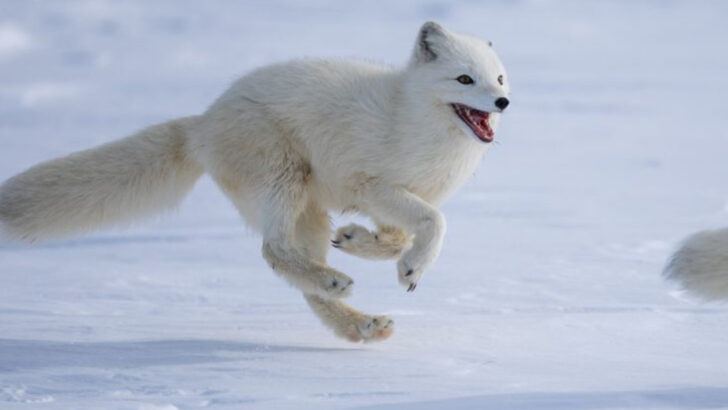The tundra is not for the faint of heart. A land of biting cold, endless snow, and days that stretch into darkness, it’s one of the most extreme environments on Earth. Yet, despite the harsh conditions, life thrives here—surprising us with creatures that are built to survive the impossible.
These animals, resilient and resourceful, have evolved to conquer every challenge the tundra throws their way. From animals cloaked in thick fur to those with remarkable survival skills, each has adapted in extraordinary ways.
In this post, we’ll introduce you to 24 incredible animals that make the tundra their home. These creatures don’t just survive—they thrive. Prepare to be amazed by their unique traits and the astonishing ways they’ve adapted to one of the harshest environments known to humankind.
Arctic Fox
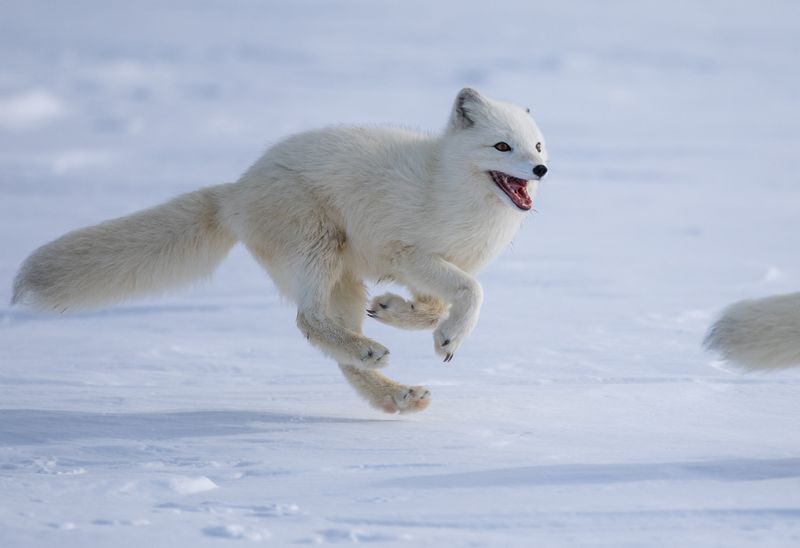
The Arctic Fox is a small yet remarkable creature thriving in the cold tundra. With its thick, white fur, the fox blends seamlessly into the snowy landscape, providing perfect camouflage from predators and prey.
Its bushy tail acts as a warm blanket, wrapping around its body during frigid nights. Adapted to extreme temperatures, the Arctic Fox has fur-covered paws that help it walk on ice and snow.
Additionally, its keen sense of hearing allows it to detect prey beneath the snow, ensuring a steady food supply even when resources are scarce.
Caribou
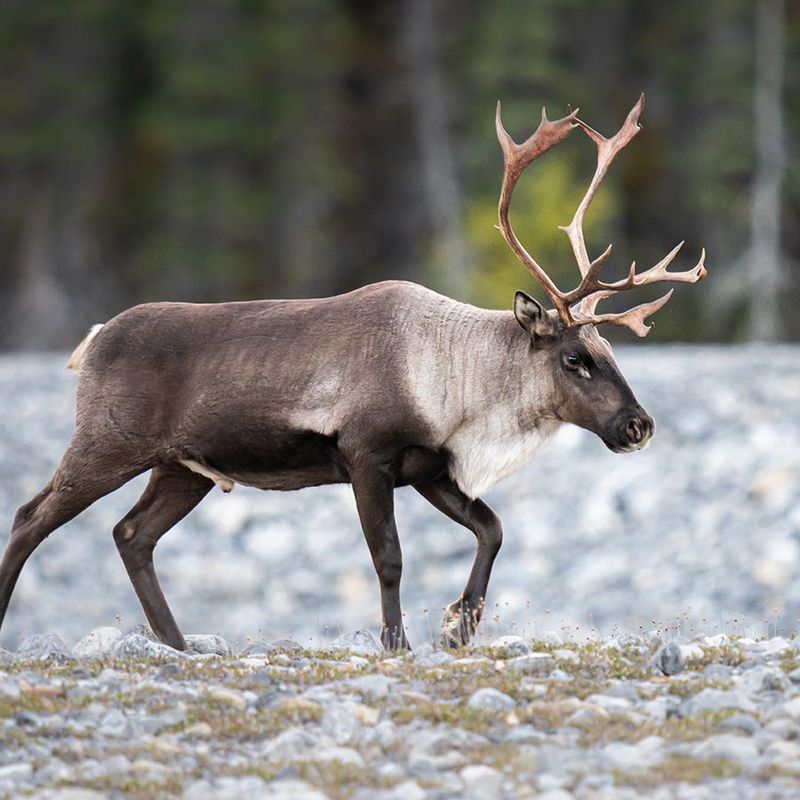
Caribou, also known as reindeer, are iconic tundra inhabitants. These majestic animals migrate across vast tundra landscapes in large herds, showcasing their adaptability to harsh environments. Their thick fur and specialized hooves provide excellent traction on snow and ice.
Caribou have a unique ability to metabolize lichen, a scarce tundra resource, making them well-suited to survive in this challenging biome. Their impressive antlers, which both males and females grow, are used for foraging and defense.
Caribou play a vital role in the tundra ecosystem, providing sustenance for predators.
Snowy Owl
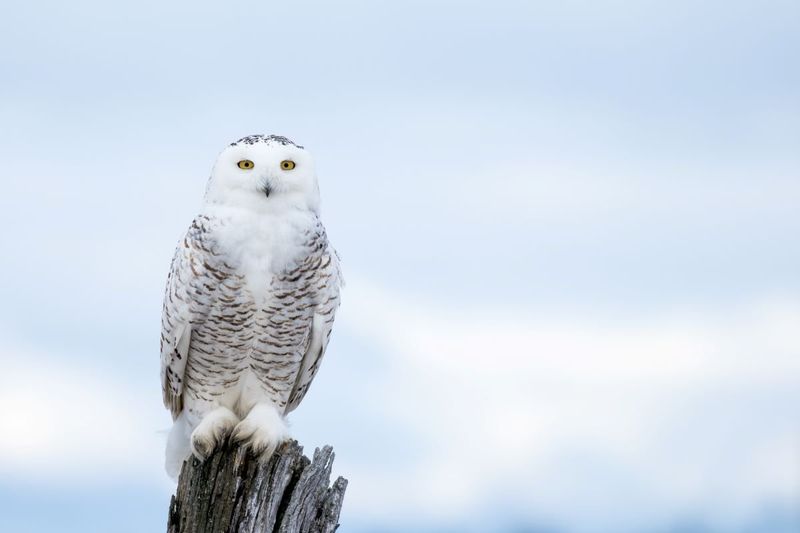
The Snowy Owl, with its striking white plumage, is perfectly adapted to the tundra environment. These magnificent birds are expert hunters, using their keen eyesight to spot prey from great distances. Silent flight allows them to surprise their prey with precision.
Snowy Owls have a unique diet, primarily consisting of lemmings, abundant in the tundra. Their thick feathers provide insulation against the cold, while their powerful talons help capture prey efficiently.
These owls exhibit territorial behavior, often defending their hunting grounds fiercely from intruders.
Musk Ox
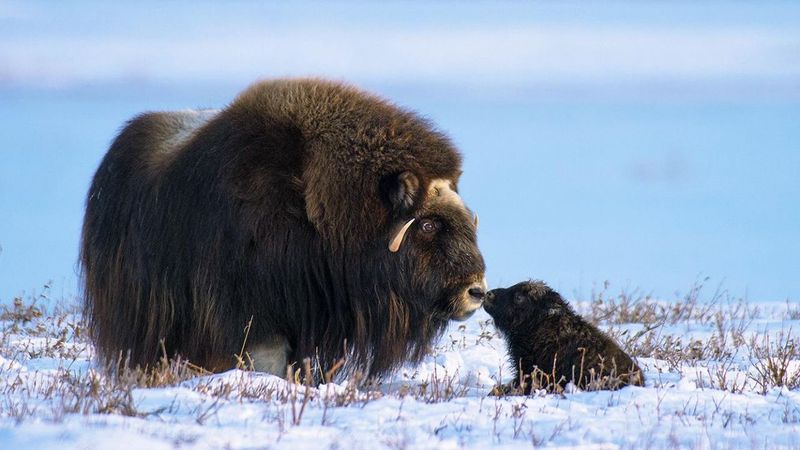
Musk Oxen are symbols of tundra resilience, with their thick, shaggy coats that protect them from freezing temperatures. These formidable creatures travel in herds, utilizing their collective strength to fend off predators like wolves.
Their unique undercoat, qiviut, is one of the warmest natural fibers known, providing essential warmth. Musk Oxen have large, rounded hooves that help them navigate snowy terrains effortlessly.
These herbivores primarily feed on grasses and willows, foraging under the snow during the harsh tundra winters. They are crucial for maintaining the ecological balance of the tundra.
Polar Bear
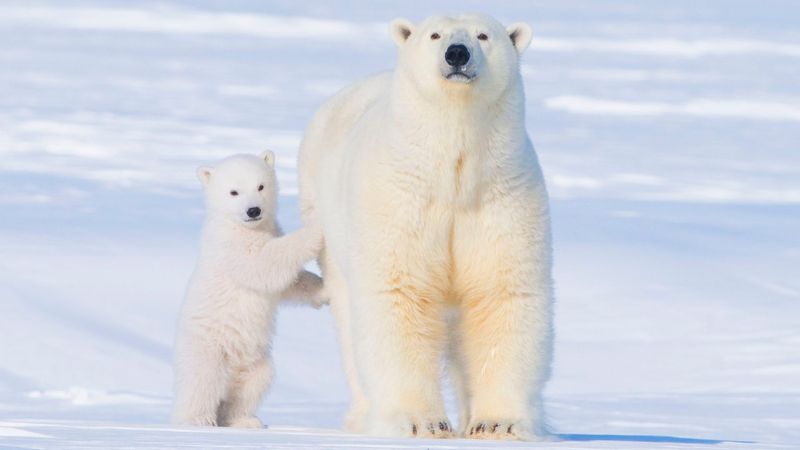
Polar Bears are the apex predators of the tundra, perfectly adapted to this icy habitat. Their thick, water-repellent fur keeps them warm, while their large paws distribute weight efficiently on thin ice.
Polar Bears primarily hunt seals, relying on the sea ice as a platform. These powerful animals are also excellent swimmers, covering great distances in search of food.
A keen sense of smell allows them to locate prey up to a mile away. Polar Bears are vital to the tundra ecosystem, maintaining the balance between predator and prey.
Arctic Hare
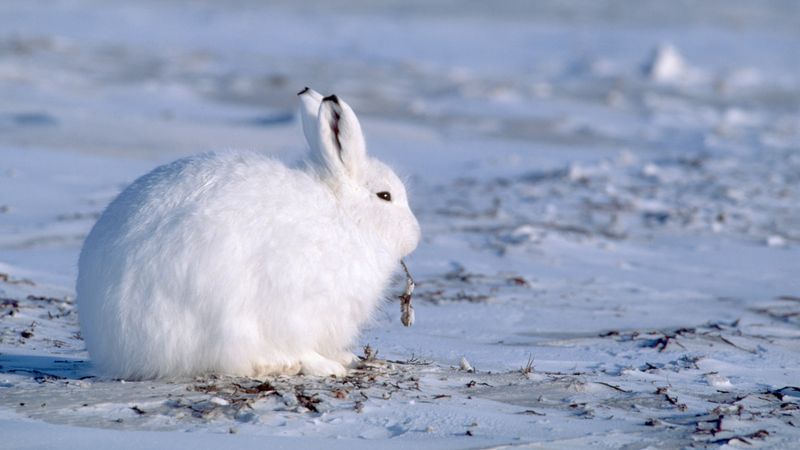
The Arctic Hare is a master of survival in the tundra. Its thick, white fur provides excellent insulation against the cold and acts as camouflage in the snowy environment.
With powerful hind legs, the hare can quickly escape predators. Arctic Hares feed on woody plants and lichens, scraping through snow to uncover food. Their keen senses help detect danger, while their social behavior allows them to huddle for warmth.
This adaptability ensures their survival in one of the planet’s harshest climates.
Lemming
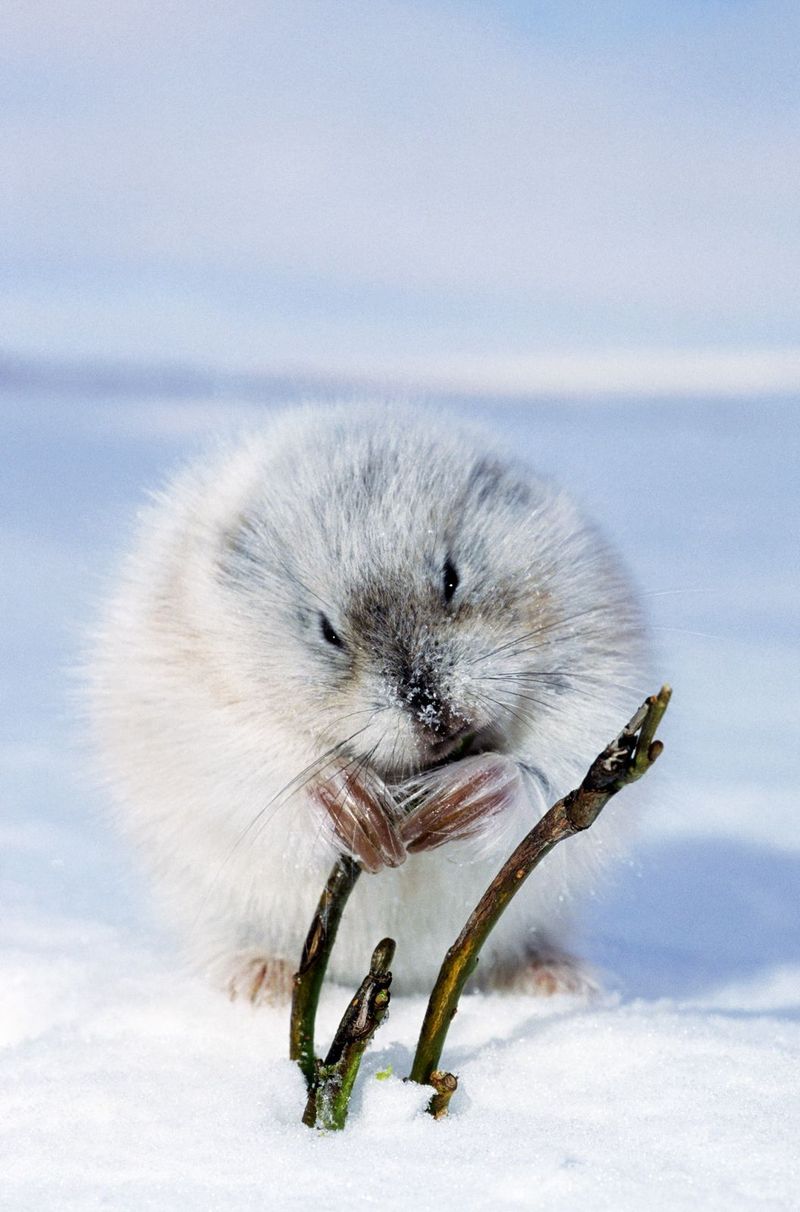
Lemmings are small rodents that play a significant role in the tundra ecosystem. Their brown fur provides camouflage against the tundra’s varied landscapes.
These creatures dig extensive burrow systems, creating insulation from the cold and protection from predators. They primarily feed on grasses and seeds, proving vital for the tundra food chain.
Despite their size, lemmings reproduce rapidly, ensuring their population remains stable. Their presence supports numerous predators, such as owls and foxes, which rely on them for sustenance.
Ptarmigan
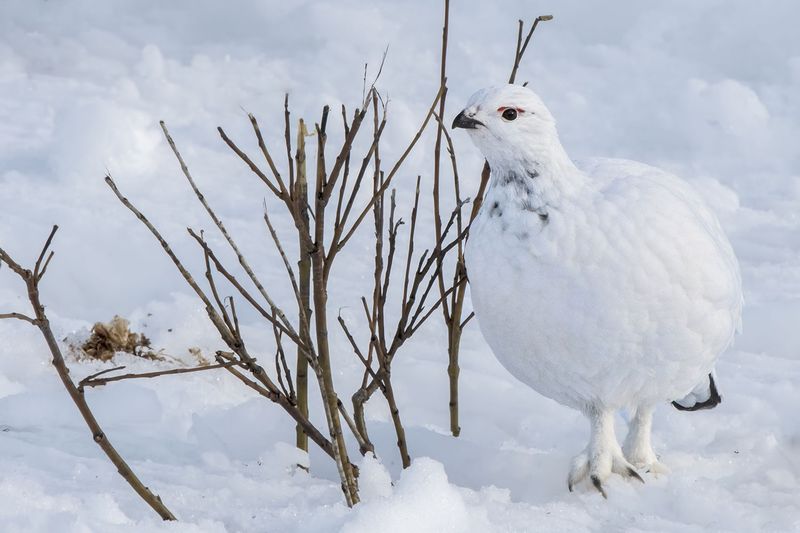
The Ptarmigan is a bird uniquely suited to tundra life, with its seasonal plumage changes that provide camouflage. In winter, it dons white feathers, blending into the snowy landscape, while in summer, it shifts to brown to match the tundra’s earthy tones.
Ptarmigans have feathered feet, acting as snowshoes to navigate the snowy terrain efficiently. They feed on buds, berries, and leaves, foraging even in harsh conditions.
These birds play a critical role in the tundra, as both prey and part of the plant-pollination process.
Arctic Wolf
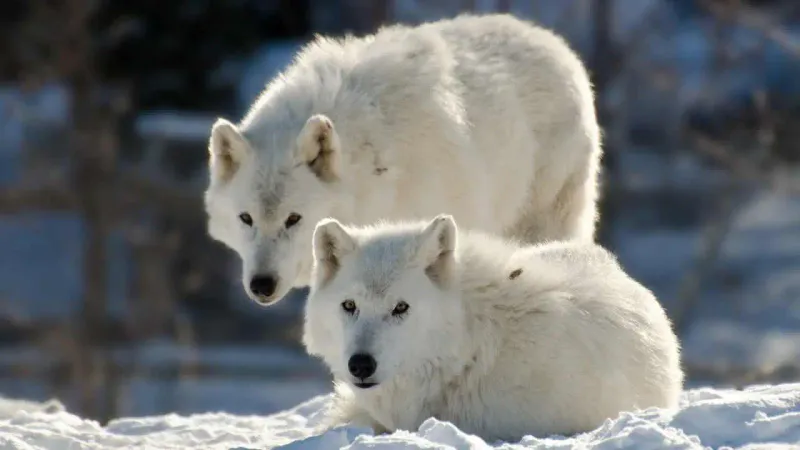
The Arctic Wolf, known for its striking appearance and adaptability, roams the tundra in packs. Their dense, white fur provides excellent insulation against the cold, while their sharp senses aid in hunting.
These wolves primarily hunt caribou and musk oxen, coordinating in packs to take down larger prey. Their social structure is vital for survival, with each member playing a role in the pack’s success.
Arctic Wolves are essential predators in the tundra ecosystem, maintaining the delicate balance of species populations.
Ermine
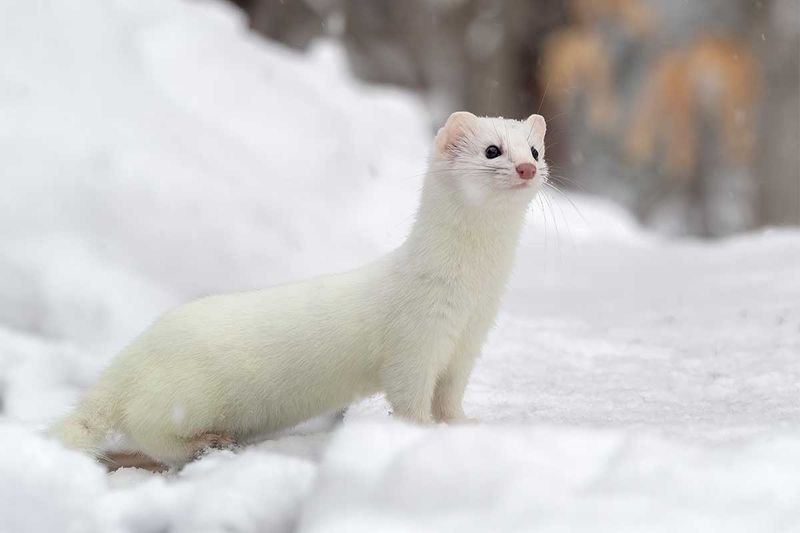
The Ermine is a small but agile predator of the tundra, well adapted to survive in extreme cold. In winter, it sports a white coat with a distinctive black-tipped tail, offering camouflage against the snow.
Ermines primarily hunt small mammals and birds, using their slender bodies to navigate burrows and tight spaces. Their sharp instincts and speed make them effective hunters.
Despite their size, ermines play a crucial role in controlling prey populations, contributing to the tundra’s ecological balance.
Wolverine
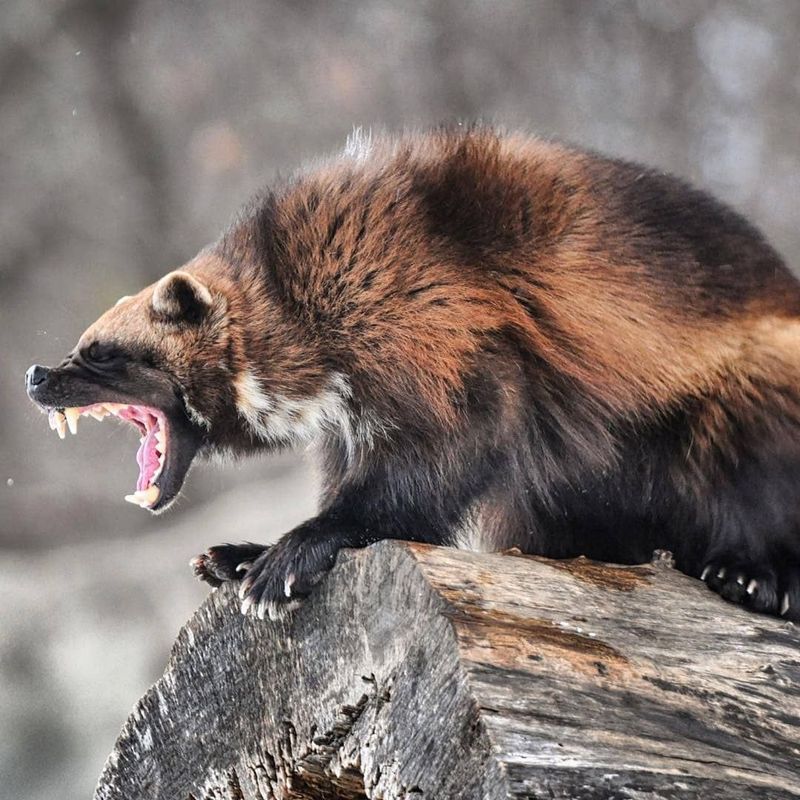
The Wolverine, renowned for its strength and tenacity, is a formidable tundra predator. With a thick coat and powerful limbs, it withstands the cold while traversing vast distances in search of food.
Wolverines are opportunistic feeders, consuming a wide range of animals, including carrion left by larger predators. Their territorial nature often leads them to defend their hunting grounds fiercely.
As scavengers and hunters, wolverines are indispensable in maintaining the balance of the tundra ecosystem.
Arctic Tern
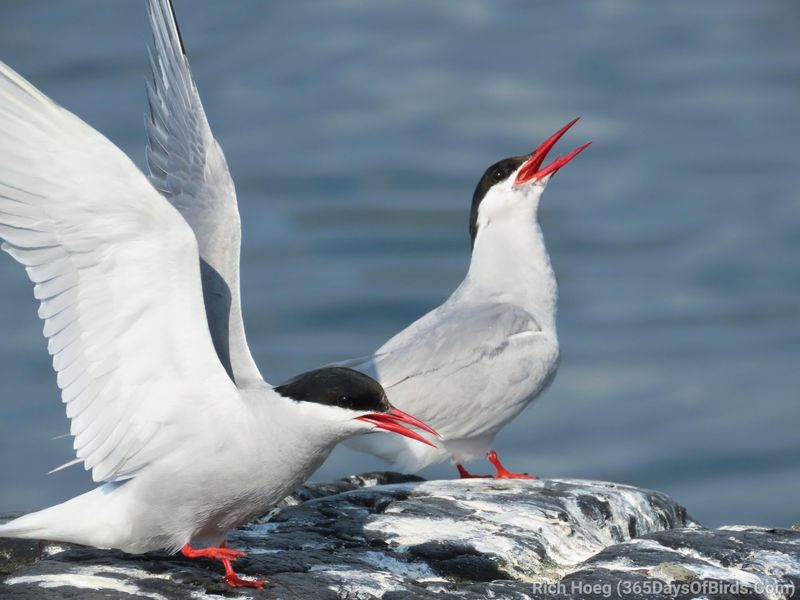
The Arctic Tern is renowned for its remarkable migratory journey, traveling from the Arctic to the Antarctic and back each year. This incredible bird, with its slender wings and streamlined body, is built for long-distance flight.
In the tundra, Arctic Terns nest and breed, raising their young in the short summer months. They feed on fish and small marine creatures, diving skillfully into icy waters.
Their impressive navigation skills and endurance make them one of nature’s most extraordinary travelers.
Brown Bear
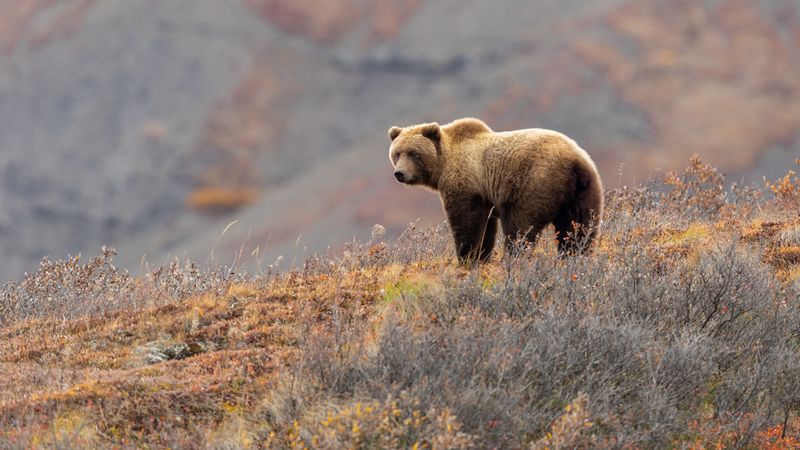
Brown Bears, though often associated with forests, thrive in tundra regions during specific seasons. These bears boast thick fur and a substantial body mass, helping them endure the cold tundra environment.
Primarily omnivorous, Brown Bears feed on a variety of foods, including fish, berries, and small mammals. Their foraging habits significantly impact the tundra ecosystem, aiding in seed dispersal and nutrient recycling.
Brown Bears hibernate during the harshest months, conserving energy and surviving the extreme winter.
Seal
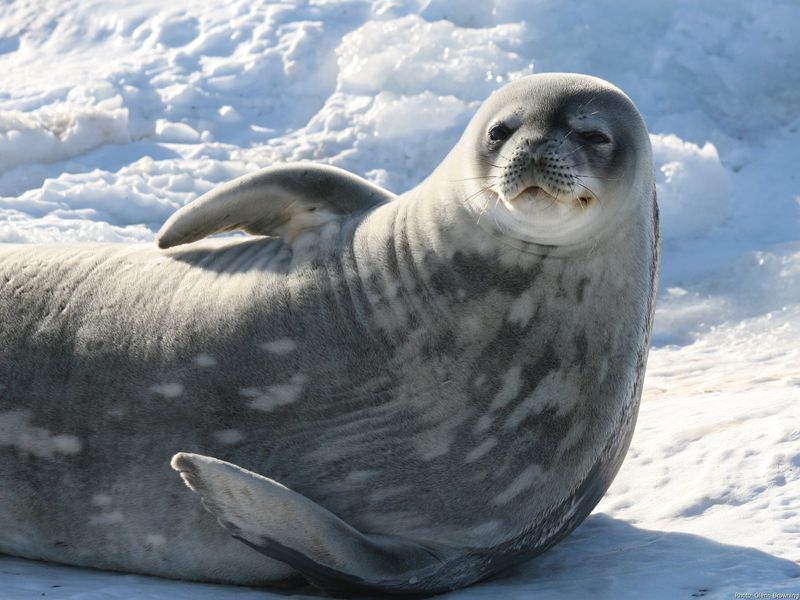
Seals, especially the Ringed Seal, are crucial inhabitants of the tundra’s icy waters. Their blubber insulates against frigid temperatures, while their streamlined bodies facilitate agile swimming.
Ringed Seals primarily feed on fish and crustaceans, using their sharp teeth to capture prey beneath the ice. They create breathing holes in the ice, ensuring access to air even when the surface is sealed.
As primary prey for polar bears, seals are integral to the tundra’s marine food web.
Walrus
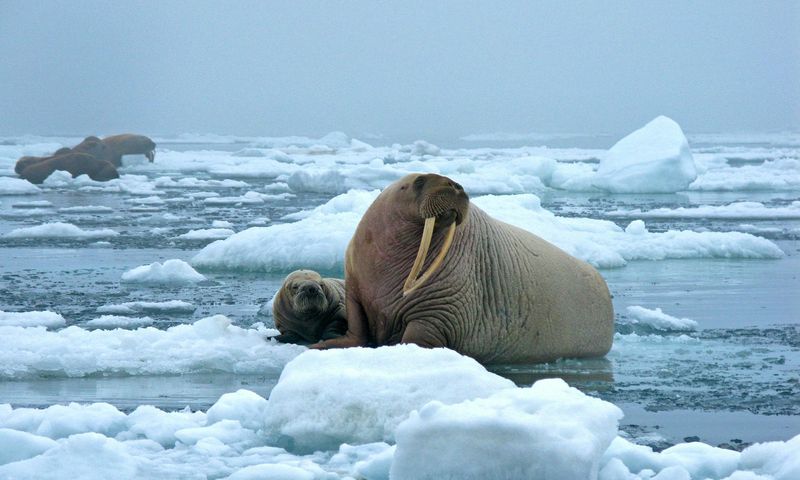
Walruses are iconic marine mammals of the tundra, easily recognizable by their long tusks and whiskered faces. These social creatures congregate in large groups on ice floes, relying on blubber for warmth.
Their tusks are used for hauling out on ice and foraging the seabed for mollusks, their primary diet. Walruses play a crucial role in the marine ecosystem, disturbing the sea floor and affecting nutrient cycles.
Their presence highlights the interconnectedness of tundra and marine environments.
Snow Bunting
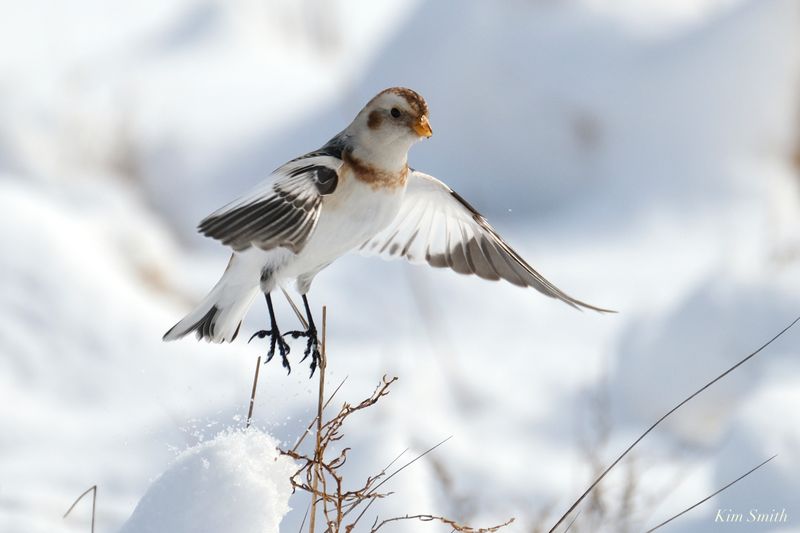
The Snow Bunting is a small, resilient bird adapted to life in the tundra. Its black and white plumage provides camouflage among the snow and rocks, while its robust body endures cold temperatures.
Snow Buntings feed on seeds and insects, foraging on the ground during the brief summer months. They nest in rocky crevices, using grass and feathers to insulate their young.
These birds are vital for seed dispersal, contributing to the tundra’s plant diversity.
Tundra Swan
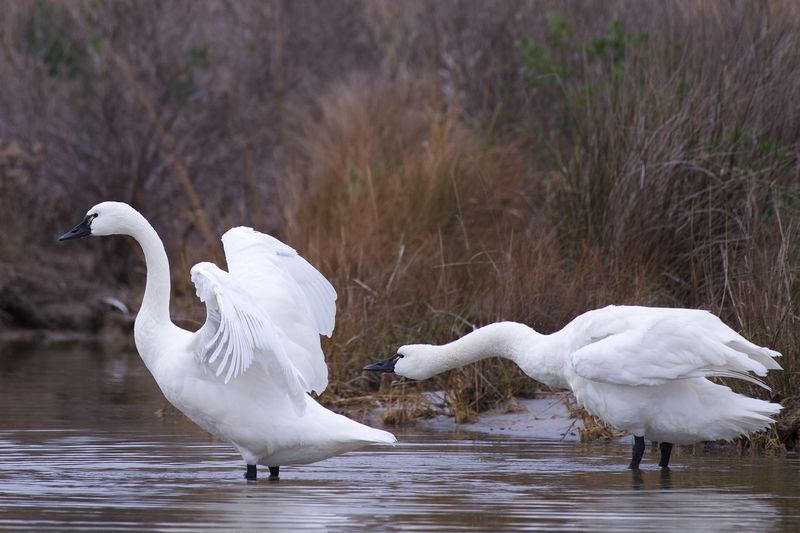
Tundra Swans are elegant nomads of the North, migrating thousands of miles to breed in the tundra during summer. Their long necks and white plumage make them a striking sight against the stark, icy backgrounds.
These swans feed on aquatic vegetation, often seen dipping their necks into chilly waters. Their ability to fly long distances is essential, as the tundra offers limited resources during winter.
Despite the harsh conditions, Tundra Swans are a testament to the resilience and adaptability required to flourish in such environments. Observing their majestic flight is a true marvel of nature.
Siberian Tiger
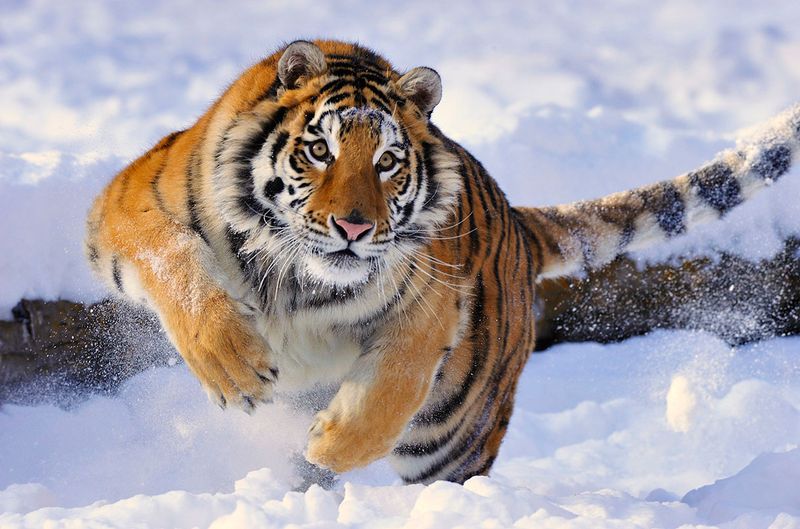
The Siberian Tiger, though primarily associated with forests, occasionally ventures into the tundra. This majestic predator has a thick coat and robust build, enabling it to survive in cold climates.
With keen senses and powerful limbs, Siberian Tigers are adept hunters, preying on deer and wild boar. Their presence in the tundra is crucial for controlling herbivore populations, thus maintaining ecological balance.
These tigers highlight the interconnectedness of forest and tundra ecosystems, as they traverse both in search of prey.
Yak
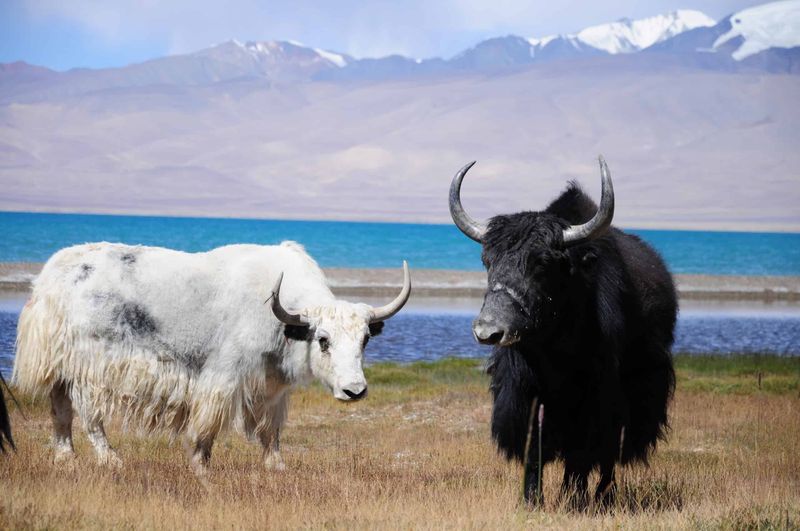
Yaks, native to the mountainous regions bordering tundra, are well-adapted to cold environments. Their long, shaggy fur provides insulation against frigid temperatures, while their large lungs and heart support high-altitude living.
These herbivores graze on sparse tundra vegetation, consuming grasses and herbs. Yaks play a vital role in their ecosystem, as their grazing patterns influence plant growth and distribution.
Their ability to endure harsh conditions makes them indispensable to the tundra’s ecological fabric.
Arctic Skua
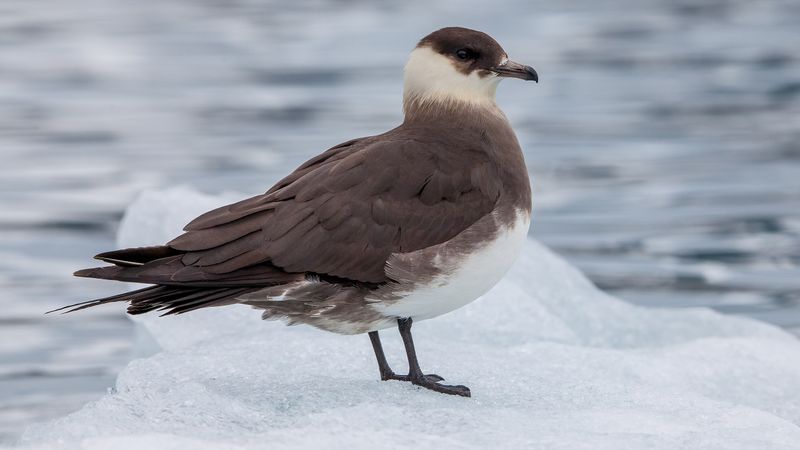
The Arctic Skua, a formidable seabird, is well-suited to the tundra’s coastal regions. With its agile flight and aggressive nature, it often steals food from other birds, exemplifying its opportunistic feeding strategy.
These birds nest in the tundra, raising their young in the brief summer. Arctic Skuas feed on fish, insects, and occasionally bird eggs, reflecting their adaptability.
They are an important part of the tundra’s avian community, contributing to its dynamic food web.
Saiga Antelope
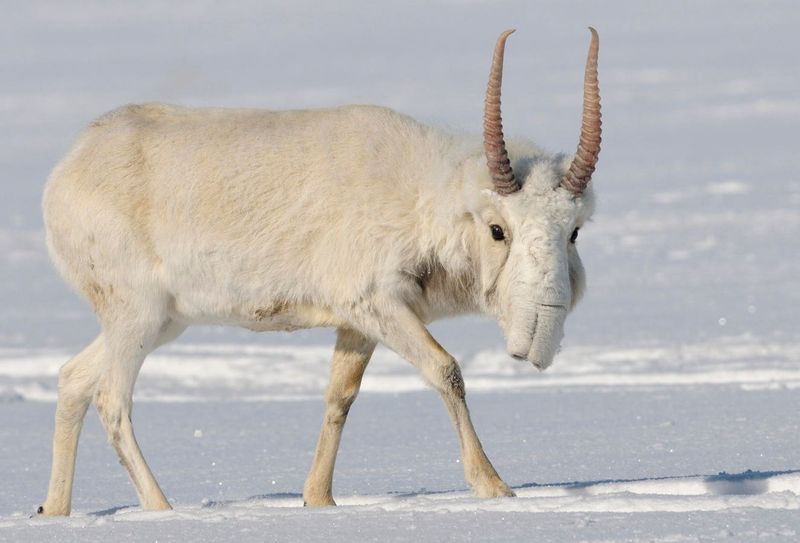
The Saiga Antelope, known for its oversized, humped nose, is a remarkable creature of the tundra. This unique nasal structure helps warm and moisten the frigid air before it reaches the lungs.
Adaptations such as these are crucial for survival in the cold tundra environment, where temperatures often plummet below freezing point. Their thick, woolly coat provides additional insulation against the biting cold and harsh winds.
Saigas travel in herds across the vast, open landscapes of the tundra, efficiently grazing and avoiding predators. Conservation efforts are ongoing to protect this species, as their populations have drastically declined due to poaching and habitat loss.
Arctic Ground Squirrel
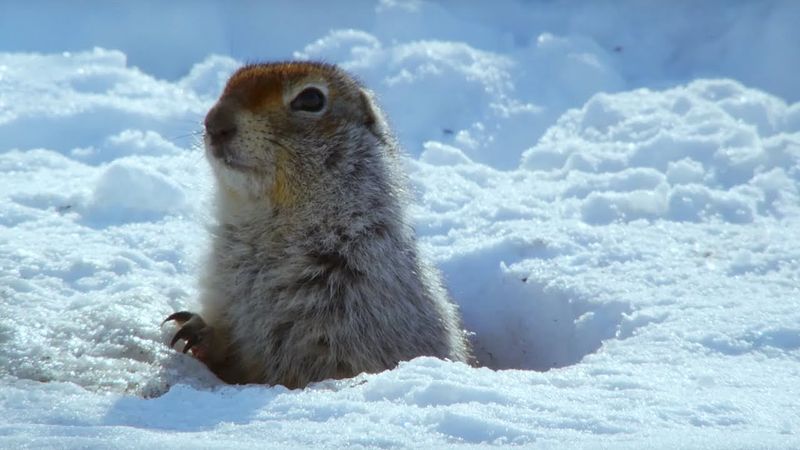
The Arctic Ground Squirrel is a survival expert, enduring the tundra’s harsh winters by hibernating for up to eight months. During this time, its body temperature can drop below freezing, a rare trait even among hibernators.
These squirrels are known to bask in the brief summer sun, rapidly gathering food to store enough fat for their long hibernation. Their burrows provide refuge from predators and the cold.
Living in social colonies, Arctic Ground Squirrels exhibit fascinating behaviors and communication skills. Their adaptability in surviving such extreme conditions makes them a captivating study for scientists.
Snow Flea
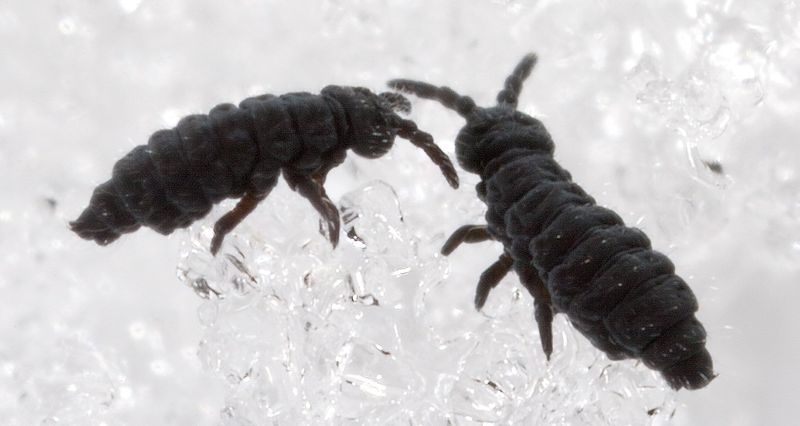
The Snow Flea is a tiny but mighty inhabitant of the tundra, often seen on snow surfaces during winter. Despite its name, it’s not an actual flea but a type of springtail, an insect known for its incredible jumping ability.
These minuscule creatures possess a unique protein that acts like antifreeze, preventing their bodily fluids from freezing in subzero temperatures. This adaptation is crucial for their survival and activity even in the chilliest months.
Snow Fleas play a vital role in the tundra ecosystem by aiding in the decomposition of organic matter, thus supporting nutrient cycling. Their presence is a reminder of the delicate balance within the tundra biome.
Snow Goose
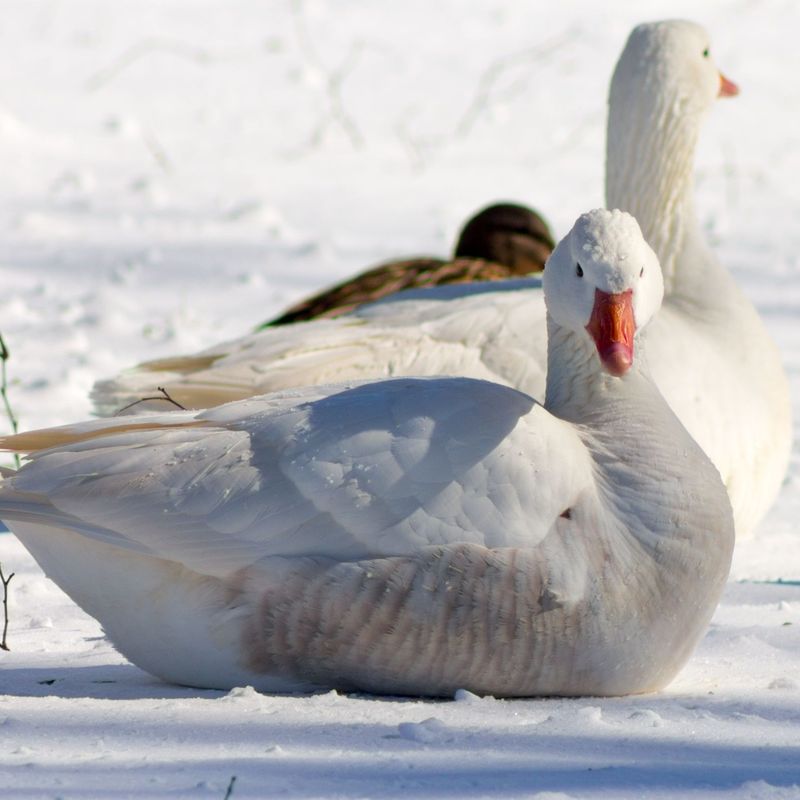
Snow Geese are magnificent migratory birds that seasonally inhabit the tundra. With their striking white plumage and black wingtips, they are easily recognizable as they fly in large flocks.
These birds feed on grasses, grains, and small invertebrates, impacting plant growth and distribution through their foraging. Snow Geese are part of a complex migratory ecosystem, linking different biomes as they travel.
Their presence in the tundra is a testament to the interconnectedness of global ecosystems.

